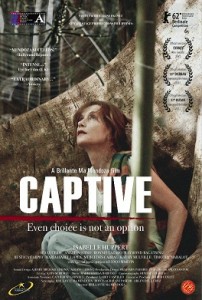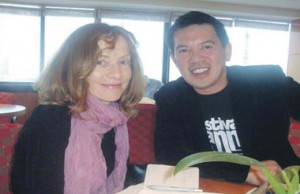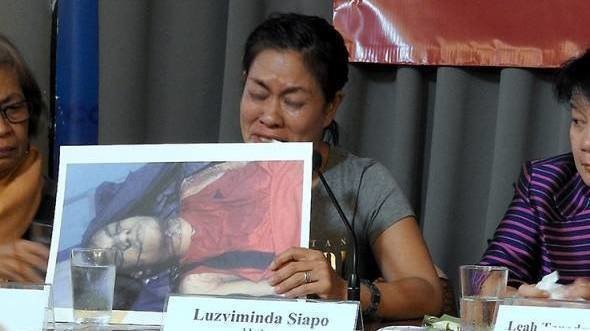By PABLO A. TARIMAN
 THE latest film of Brillante Mendoza, “Captive,” attempts to document the perennial problem of kidnap-for-ransom associated with Southern Mindanao.
THE latest film of Brillante Mendoza, “Captive,” attempts to document the perennial problem of kidnap-for-ransom associated with Southern Mindanao.
In the film, Mendoza presents such lawlessness from the point of view of captors and hostages and what they go through. The filmmaker takes off from that event of 2001 where some 20 hostages, including a missionary couple, were abducted in Dos Palmas in Palawan and taken to Basilan. The day-to-day happenings — as negotiations drag on for close to a year — are vividly captured in “Captive” with layers of economic, cultural and even religious components coming into the picture.
At the start of the film, you get to see a slice of humanity as the kidnappers and their victims are headed for another destination when members of the Abu Sayyaf announce the hostage taking. There is a Caucasian couple (Katherine Mulville and Marc Zanetta), French missionary and her assistant (Isabelle Huppert and Rustica Carpio), a banker (Madeleine Nicolas) and many others including two Chinese girls. The abductors include Sid Lucero, Raymund Bagatsing, Mon Confiado and the leader played by Ronnie Lazaro.
The trip through the high seas has some poignant, if, interesting sidelights. One of the leaders announces that they observe a high level of morality in this endeavor and that as a rule, women are not to be touched. Unnecessary pieces of baggage have to go and the poor missionary (Huppert) hollers when the group decides those Bibles have to go as well.
When they hit land in Basilan, you get some details that — for the most part — shock the wit out of the hostages. They begin to realize that the leader (Lazaro) is always talking to someone with obvious military background and not a few hostages see money changing hands in the middle of the bloody siege.
As days drag into months, love beckons between captor and hostage and a Muslim marriage ensues. But one decides he doesn’t have to go through the Muslim ritual to get what he wants and rapes one of the women to the outrage of Huppert who delivers a stunning performance in this scene.
On the whole, you see that the Filipino actors are made of formidable stuff. The outstanding performances of Lucero, Bagatsing and Lazaro reflect the various faces of evil even as they constantly quote lines from the Koran. Mulville and Zanetta did very well in the video interview conducted by journalist Arlyn de la Cruz who plays herself. Coco Martin makes a marked cameo role as one of the soldiers going after the outlaws.
The filmmaker gives us stark images of the law of the jungle as the camera pans on a huge python lynching his meal for the day. On the other hand, Huppert momentarily forgets her ordeal as she views a rare beautiful bird hopping through the trees in the jungle.
But as the military rescuers arrive late in the day (more like a year), you get an idea what hostages go through, what captors always bargain for and you gradually discover a hint of grand conspiracy with the socio-military-economic complex.
 The stunning cinematography by Odyssey Flores captures the dark message of this thriller which has many things to say about how this country is being run. Background music by Teresa Barrozo is kept to the minimum and complimented by an excellent sound designed by Laurent Chassaigne, Michael Idioma, and Addiss Tabong.
The stunning cinematography by Odyssey Flores captures the dark message of this thriller which has many things to say about how this country is being run. Background music by Teresa Barrozo is kept to the minimum and complimented by an excellent sound designed by Laurent Chassaigne, Michael Idioma, and Addiss Tabong.
By choice, the director decides he will treat the episodes for what they are with no conventional plots and subplots. The big chill is that those captors actually have a link with the much-dreaded tentacles of Osama bin Laden and were cheering when they hear about the attack on the New York Twin Towers.
In my book, this is a landmark film more real and more socially encompassing than the commercial fantasies of “Bourne Legacy.” It is not easy following Mendoza’s cinematic point of view but in the end, you realize that this filmmaker is concerned with socio-political reality, not with making fast bucks by following the formula thriller genre.
Produced by Didier Costet at a cost of some P60 million, “Captive” availed of the services of some 40 actors including the celebrated French actress, Isabelle Huppert, who was head of the jury when the Filipino filmmaker won the best director trophy for his controversial film, “Kinatay.” Huppert was also a recipient of the Best Actress trophy for the title role in the French film, “The Piano Teacher.”
As it is, this film is first-rate sociology of the Mindanao landscape many Filipinos, with all their biases, try to understand. The film is also proof that we have a stable of first-rate Filipino actors and directors who pursue their line of cinematic vision away from the cheap thrills of Hollywood films.
“Captive” deserves the A rating from the film rating board and the endorsement of National Artist Bienvenido Lumbera, among others.


